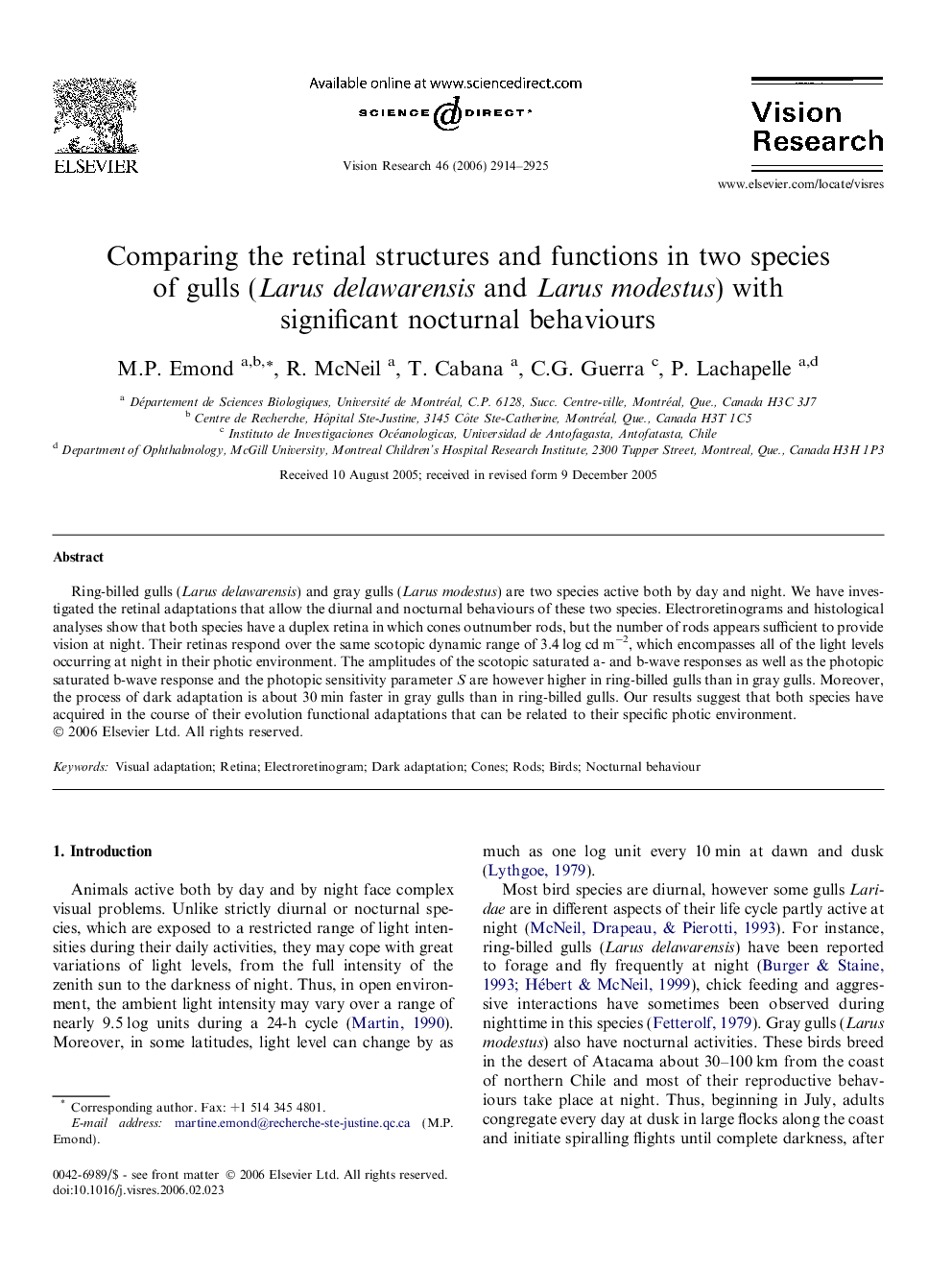| Article ID | Journal | Published Year | Pages | File Type |
|---|---|---|---|---|
| 4036624 | Vision Research | 2006 | 12 Pages |
Ring-billed gulls (Larus delawarensis) and gray gulls (Larus modestus) are two species active both by day and night. We have investigated the retinal adaptations that allow the diurnal and nocturnal behaviours of these two species. Electroretinograms and histological analyses show that both species have a duplex retina in which cones outnumber rods, but the number of rods appears sufficient to provide vision at night. Their retinas respond over the same scotopic dynamic range of 3.4 log cd m−2, which encompasses all of the light levels occurring at night in their photic environment. The amplitudes of the scotopic saturated a- and b-wave responses as well as the photopic saturated b-wave response and the photopic sensitivity parameter S are however higher in ring-billed gulls than in gray gulls. Moreover, the process of dark adaptation is about 30 min faster in gray gulls than in ring-billed gulls. Our results suggest that both species have acquired in the course of their evolution functional adaptations that can be related to their specific photic environment.
